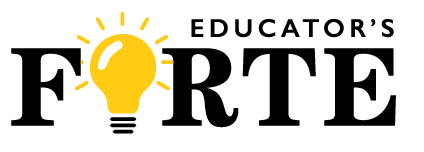Welcome to the final part of our blog post series on teacher professional development! In Part 1, we discussed the importance of personalized topics for professional development. Part 2 highlighted the characteristics of andragogy in teacher professional development, and Part 3 explored alternative approaches to learning and training. In Part 4, we will delve into the process of creating and implementing professional development plans for teachers, providing specific recommendations and examples to help school leaders support teachers in their continuous growth as educators.

Conducting Comprehensive Needs Assessments
The first step in creating individualized professional development plans is to conduct comprehensive needs assessments. This involves gathering data through various methods such as surveys, observations, self-reflections, and discussions with teachers. School leaders can use this data to identify common themes and patterns and prioritize the areas that need further development. For instance, a needs assessment might reveal that a group of teachers require support on effective questioning strategies or improving their classroom management skills. By identifying specific teachers that would benefit from different areas of focus, leaders can ensure that professional learning opportunities are relevant and immediately applicable.
To streamline the needs assessment process, create a survey or other instrument to collect data in a structured manner. The survey can include sections such as strengths, areas for improvement, interests, and goals. It can also include prompts or questions to guide teachers in reflecting on their professional development needs. An example of a question could be: “What specific areas do you feel you need further support or training in to enhance your instructional practices?” You may also include a list of suggested focus areas, asking teachers to rank each one based on their individual needs. The data collected serves as a valuable tool for structuring growth goals for teachers.
Setting SMART Goals for Growth
Once needs assessments are completed, teachers and school leaders can work collaboratively to set SMART goals (goals that are Specific, Measurable, Achievable, Relevant, and Time-bound). SMART goals help ensure that professional development plans are focused, achievable, and aligned with teachers’ needs and school priorities. For example, a SMART goal could be “By the end of the school year, increase student engagement in my classroom by implementing at least three new instructional strategies learned through professional development, as measured by student surveys and formative assessments.”
The SMART goals can be documented in a goal-setting template. The template can include fields to specify the goal, the desired outcome, the timeline for completion, and the criteria for measuring progress. This can serve as a roadmap for teachers to guide their professional development journey and track their progress over time.
Designing Customized Professional Development Plans
Individualized professional development plans are designed based on the needs assessments and SMART goals. These plans should be tailored to the unique needs, interests, learning styles, and schedules of individual teachers. Professional development activities can include a mix of modalities, such as workshops, conferences, webinars, online courses, coaching sessions, peer observations, and collaborative lesson planning.
To ensure that the professional development plans are effective, it’s important to provide opportunities for teachers to have input and ownership in the process. Teachers can be encouraged to identify specific professional development activities that align with their interests and goals. School leaders can also provide guidance and support in selecting appropriate resources and opportunities for growth. By involving teachers in the decision-making process, it increases their engagement and motivation in their own professional development.
Note that individualized learning plans do not negate district and school initiatives. Generally, those global initiatives are relevant and required for teachers and may include training on new curriculum resources, new digital programs, or new policy that is essential for every teacher to learn. While those large-scale initiatives are often time consuming, it is important that they not make up the entire professional learning plan. Individual teachers have individual areas of need that cannot be accounted for by global initiatives and those specific needs must be the foundation of the professional development plan.
Click here for to download a blank Personalized Professional Development Plan.
Providing Ongoing Support and Follow-up
Effective professional development is not a one-time event, but a continuous process that requires ongoing support and follow-up. Follow-up activities can include reflective journaling, collaborative lesson planning, and regular check-ins to monitor progress towards the set goals. School leaders can provide additional support through regular observation with reflective feedback sessions, coaching, mentoring, and small-group discussions that include multiple teachers focused on the same topic. To streamline the process, individual professional development plan templates should include specific plans for follow-up activities with an explicit timeline.
By involving teachers in the decision-making and planning process, establishing clear and agreed-upon goals, and implementing effective ongoing support, individualized professional development plans can strongly increase teacher engagement and motivation in their own professional development, and schools can foster a culture of continuous learning and growth, ultimately benefiting both teachers and students alike.
